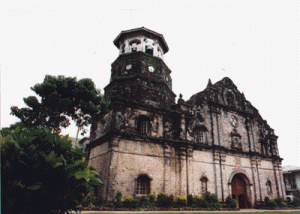Highlights of Historical Events
1815 - The Pueblo was established. The first Gobernadorcillo was Eugenio Gerardo, appointed by a Spanish friar.
1895 – A new reform in the government called “Reforma Nueva” changed the Gobernadornacillo to Capitan Municipal. Servillano Quiachon was appointed Capitan Municipal.
1901 – Revolutionary Reform changed the Capitan Municipal to Presidente Local. Don Eugenio Villagracia was appointed.
American Government in Ivisan was formally established and run by the American themselves.
1902 – Capitan Hipolito Vidal was responsible for the construction of the Catholic Church Convent.
1911 – Election of the Municipal Presidente. Pedro Advincula was the first Municipal President. In his term, the Gabaldon Building (later used as Ospital sang Ivisan, now Kabuhayan Training Center) was constructed.
1914 – The Road from Capiz was improved and extended to Ivisan. The Panay Autobus started the operation in Iloilo, Capiz and Aklan passing Ivisan.
1920 – Philippine copra was exported. Ivisan developed copra industry. Tice was produced in lowland areas with the use of plow and carabao.
Mayor Catalino Andrada established the Ivisan Elementary School.
1932 – Mayor Felipe Manalo opened the canal to facilitate water transportation to Balaring, Basiao and Cabugao.
April 2, 1942 – The Japanese Imperial Army forces came to Ivisan, occupying the Poblacion and put up their garrison at the foot of the bridge opposite the Roman Catholic Church.
The pattern living in the community abruptly changed. People left their homes and farms uncultivated for fear.
The Japanese exerted efforts to organize a civil government. The pre- war Mayor Manuel Villaruz was inducted into office. Norberto Villarde was appointed Chief of Police. Japanese Officers ordered the teachers to organize classes. The church was used as a classroom. The principal was Martiniano Andrada, aand the teachers were Mrs.basilisa Gustilo, Mrs. Marciana Valcarcel, Mrs. Consolacion Didulo and Mrs. Nancy Yap.
Major Esteban Andrada and Captain Leon Gamboa exerted efforts to organize different army troops who did not surrender to the enemies.
In the latter part of the war, sometime in 1944, a sporadic activity in Ivisan was aided by the Hublag Batallion which succeeded in raiding the Japanese Garrison in Loctugan.
July 4, 1946 – The Third Republic of the Philippines was born. Don Manuel Villaruz served as a mayor from 1935- 1948. In November 1947, Illuminado Villaruz was elected as Mayor. During his term everything returned to normal.














